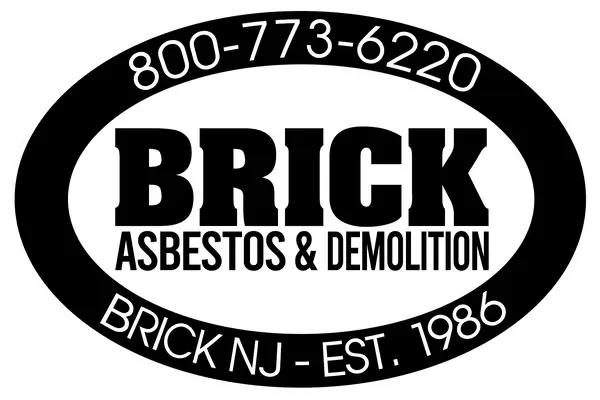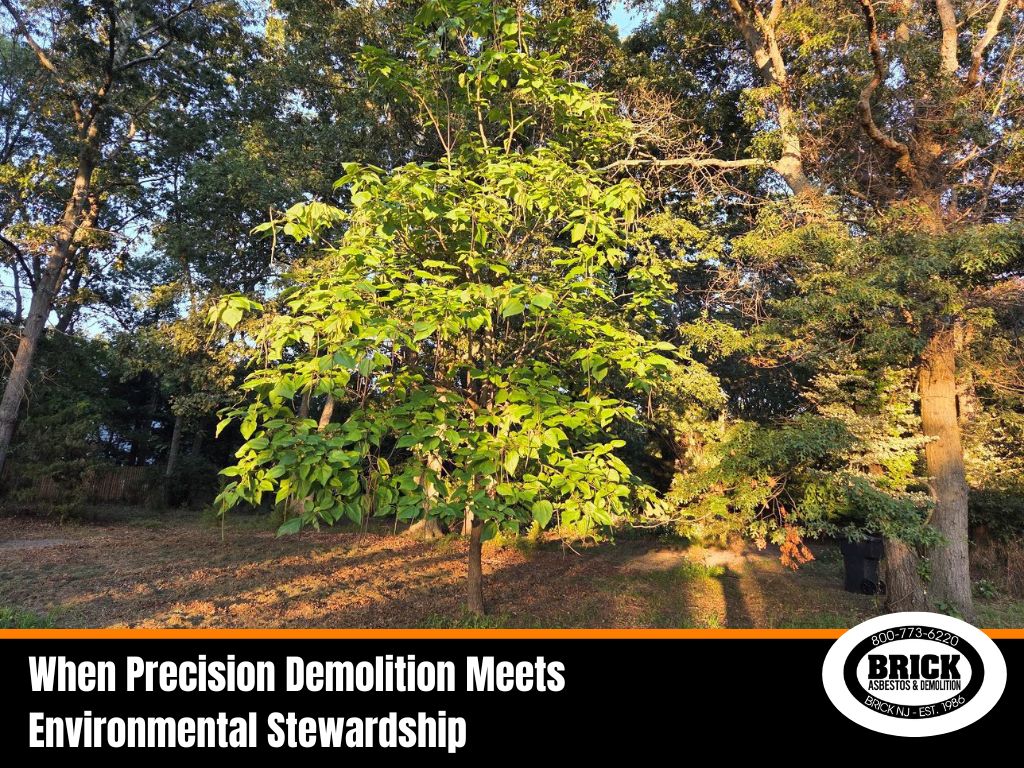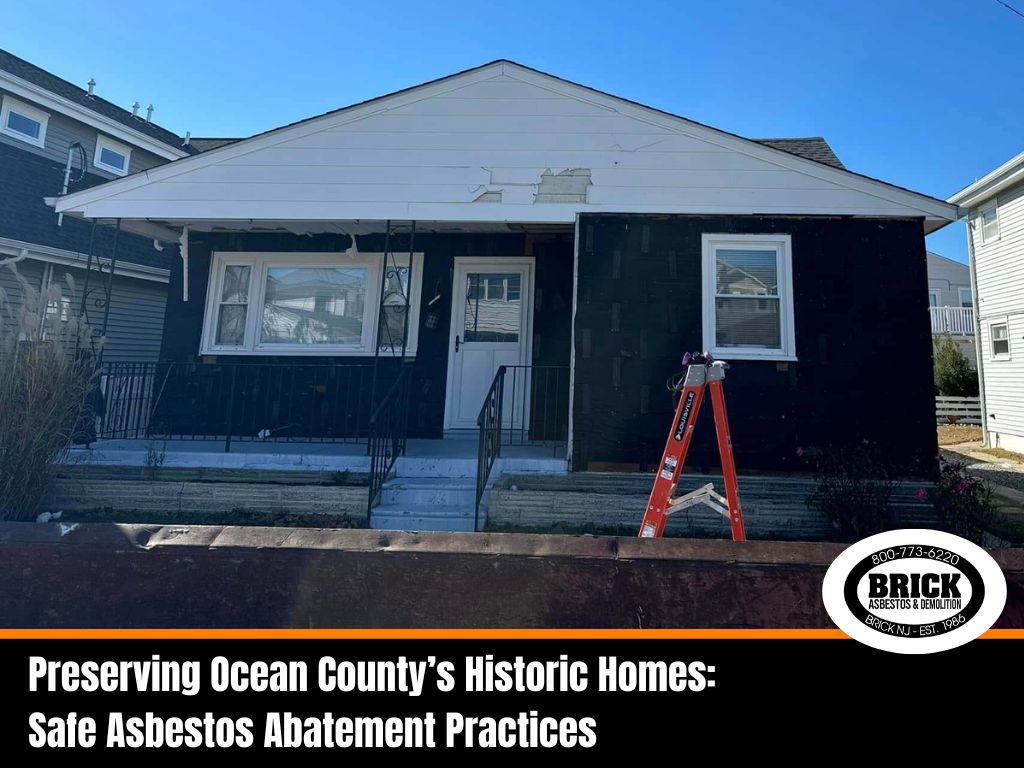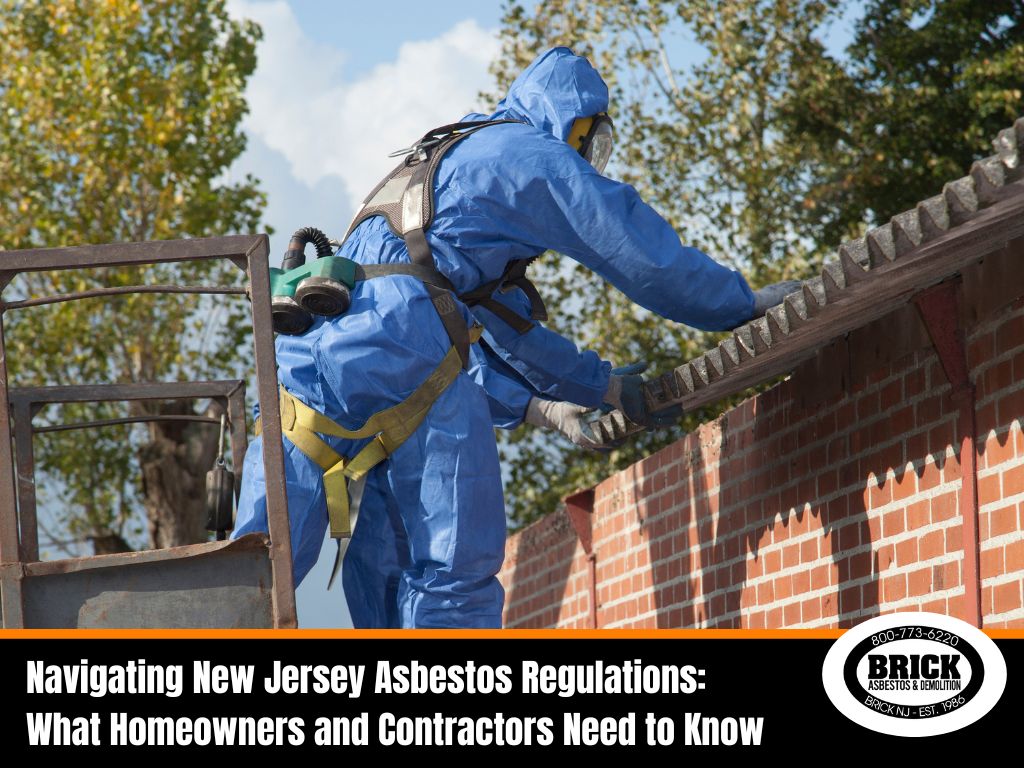Can Water Damage Increase the Likelihood of Asbestos Contamination in Homes or Commercial Properties?

Water damage is stressful enough on its own, but when asbestos is involved, your cleanup concerns can escalate into a health and safety threat that demands immediate, expert attention.
If you’re wondering whether water damage can increase the chances of environmental asbestos contamination, the answer is yes.
When materials containing asbestos are damaged by water (like wall and ceiling drywall & joint compound, wall and ceiling plaster & lathe, sheet linoleum flooring, vinyl floor tile, flooring adhesive and glues, flooring underlayment, thermal systems pipe insulation, attic insulation, hvac ductwrap, wall insulation, transite panels etc) become wet, they can degrade and release asbestos fibers into the air and become severely dangerous.
Below, we’ll walk you through what this means, why it matters, and how to protect your health and your property.
How Water Damage Can Lead to Asbestos Exposure
Many older buildings still contain asbestos materials such as wall and ceiling drywall & joint compound, wall and ceiling plaster & lathe, sheet linoleum flooring, vinyl floor tile, flooring adhesive and glues, flooring underlayment, thermal systems pipe insulation, attic insulation, HVAC ductwrap, wall insulation, transite panels, etc.
Over time, moisture can break these materials down, making them brittle and unstable. When this happens:
- Asbestos fibers can become airborne during the drying/dryout/cleanup process.
- During demolition, Asbestos fibers can become airborne, enter HVAC systems, and travel throughout the structure.
According to the Environmental Protection Agency (EPA) and the World Health Organization, asbestos is classified among toxic substances that pose serious health risks to human health, including lung cancer, asbestosis, and mesothelioma.
Our responsibility to our customers and to our society is to eliminate all exposures to airborne asbestos fibers.
How Do Our Professionals Sample and Manage the Risks of Asbestos Exposure in Homes & Businesses?

Our specialists are trained in specific sampling techniques for suspected asbestos-containing materials and use strict testing protocols to check for contamination and deal with hazardous materials.
For example, the water mitigation industry’s own guidelines, the IICRC S500 water protocols, recommend that companies test any questionable materials before installing drying fans or starting demolition & clean up.
Without testing, you could unknowingly release asbestos fibers into your environment.
No water damage contractor should ever install fans or start demolition without a complete asbestos survey/testing report completed prior to starting.
Why You Should Never Handle Asbestos Fibers Yourself
Even a small mistake can turn asbestos waste into an environmental hazard. Trying to remove asbestos-containing materials on your own increases the risk of exposure to asbestos, not just for you, but for anyone who visits your home or works in your building.

The Hidden Dangers of Exposure to Asbestos
When asbestos-containing materials are disturbed, they release microscopic asbestos fibers into the air. These fibers are invisible to the naked eye but can lodge deep in your lungs when inhaled.
According to the World Health Organization, there is no safe level of asbestos exposure, and it is estimated that more than 200,000 people die each year globally from asbestos-related exposure and diseases. Prolonged or repeated inhalation significantly increases the risk of:
- Lung cancer
- Mesothelioma, an aggressive cancer of the lung lining
- Asbestosis, a chronic lung disease
Asbestos in Water Damage: A Less Visible Threat
We have seen time and time again that some water damage contractors will put profit ahead of safety protocols. If you a property that was built before 1980 and have water damage due to a water pipe breaking or a sewage back up, please reach out to us to help with a proper asbestos inspection.
Health & Cancer Risks Multiply Over Time
One of the most troubling facts about asbestos exposure is that symptoms often don’t appear until 10–40 years after exposure, as reported by the Mayo Clinic. This long latency means many people don’t realize they’ve been affected until a serious illness develops.
According to Mesotheliomia.com, once asbestos fibers are in your body, they can remain indefinitely. The damage these hazardous materials cause accumulates over decades, leading to severe human health risks and consequences.
Proper Abatement of Asbestos in Water
Proper asbestos abatement becomes even more critical when water has compromised building materials. Our certified professionals follow strict protocols to protect your indoor air quality and your health.
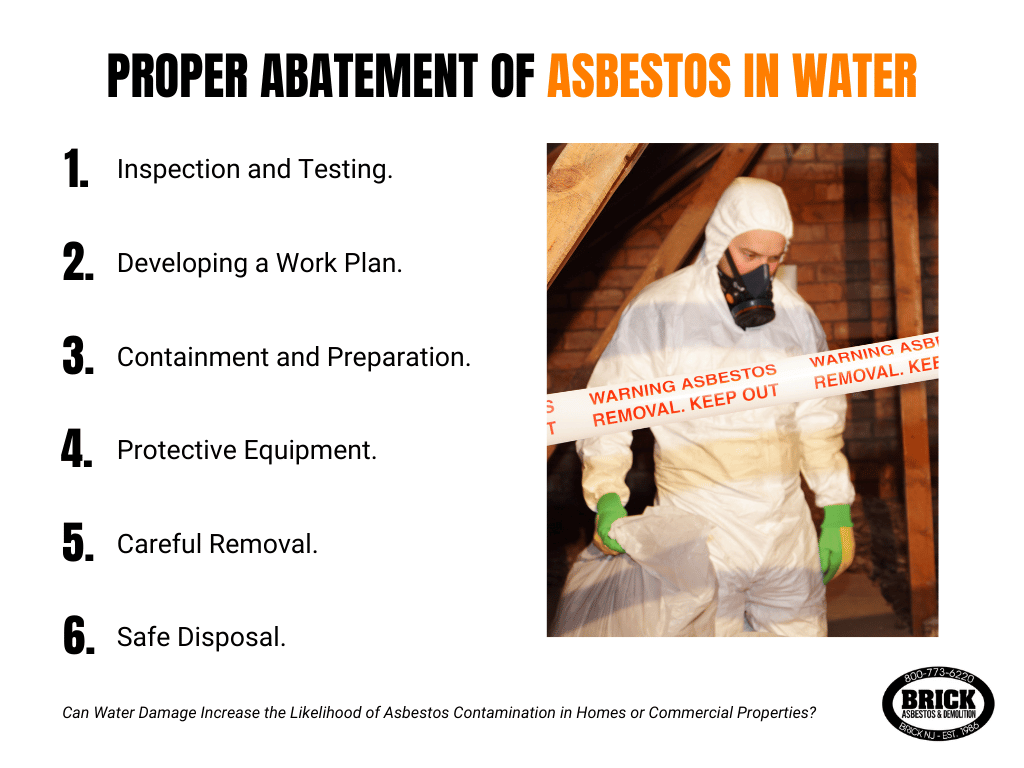
Inspection and Testing
It begins with a thorough inspection and testing phase.
Please reach out to us to schedule an appointment for one of our certified asbestos building inspectors to collect samples of all suspect building materials that could contain asbestos fibers.
Developing a Work Plan
Next, Brick Asbestos & Demolition is a state-licensed abatement contractor that will develop a detailed work plan customized to the presence of asbestos in wet environments. This plan outlines how asbestos-containing materials will be contained or extracted safely, and how contaminated materials will be removed without spreading fibers.
Containment and Preparation
Before any removal work begins, our team seals off the work area with the proper plastic sheeting to prevent asbestos fibers DIY from escaping. Specialized pumps and filtration equipment are set up to collect water that may carry asbestos fibres. Negative air pressure systems and HEPA filtration are installed to maintain safe air quality during cleanup and demolition.
Protective Equipment
Workers wear waterproof protective clothing and respirators specifically rated to handle airborne and waterborne asbestos particles. These measures protect the crew from both direct contact and inhalation hazards.
Careful Removal
Removal is performed slowly and methodically. Technicians wet materials deliberately to keep fibers contained, but also use specialized vacuums and filtration systems to capture fibers suspended in standing water.
Damaged asbestos cement, pipe fragments, and other contaminated materials are collected carefully to avoid any further release of asbestos fibers into the property or plumbing.
Safe Disposal
All asbestos-containing debris and contaminated water are collected in leak-tight, clearly labeled containers. Water may be filtered and treated to comply with Environmental Protection Agency standards before disposal.
The solid waste is transported to approved disposal facilities, and detailed records are maintained to document compliance with New Jersey asbestos regulations and federal guidelines.
Final Cleaning and Air Monitoring
Finally, the abatement team performs a meticulous cleaning of the entire site, including any affected plumbing or water treatment systems. Air monitoring and, when necessary, water sampling confirm that asbestos concentrations have been reduced to safe levels before the area is reopened for use.
This process isn’t something to attempt without proper training, licensing, and specialized equipment. Certified professionals are equipped to protect your human health, property, and peace of mind.
Thorough Abatement of Asbestos Water Damaged Materials

At Brick Asbestos & Demolition, we’ve helped countless NJ families and businesses handle the complex challenges that water damage and asbestos bring. Our team:
- Has all required state Certifications and Licensing
- Follows rigorous safety protocols to reduce the chance of airborne asbestos
- Provides clear, honest communication about what you can expect
- Specializes in asbestos abatement, including cases complicated by water damage
- Has earned 5-star reviews from homeowners and commercial clients alike
We also handle environmental asbestos responsibly to protect your property and the community. Our work strictly complies with New Jersey asbestos regulations, including notification requirements, containment standards, and disposal rules set by the New Jersey Department of Health and the Department of Environmental Protection.
A Final Word About Your Safety Around Asbestos Hazards of Water Damage
If you suspect water damage has impacted materials that could contain asbestos concentrations, do not attempt removal yourself. Call a certified professional right away. The risks to your human health aren’t worth taking shortcuts, especially when drinking water is involved.
If you have questions or need help with asbestos in water, Brick Asbestos & Demolition is here to walk you through every step with experience, compassion, and reassurance.
Reach out to our team anytime. We’re here to help you get your New Jersey property and your peace of mind back on solid ground.
